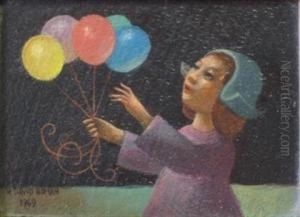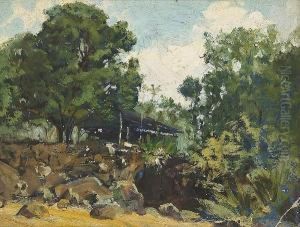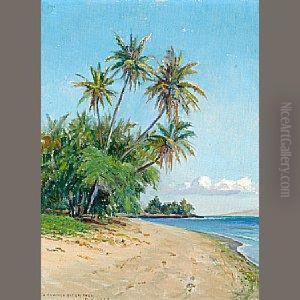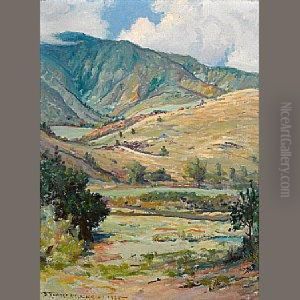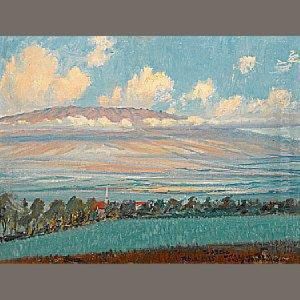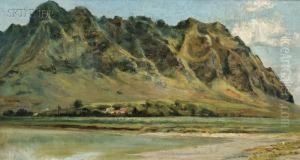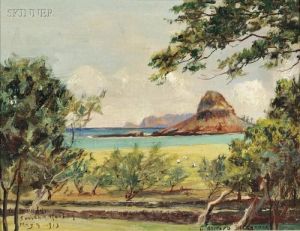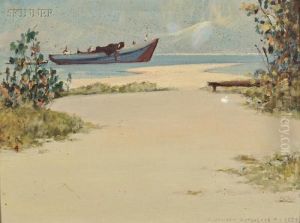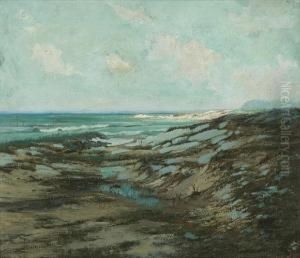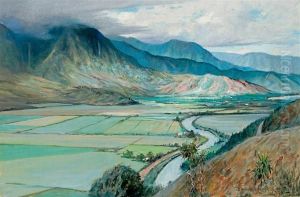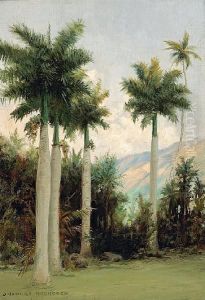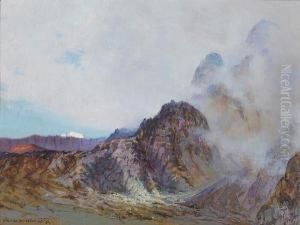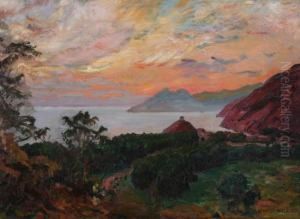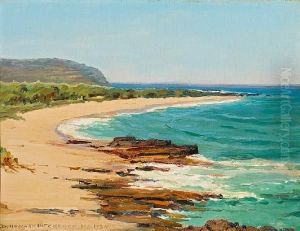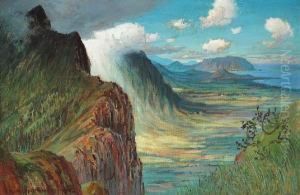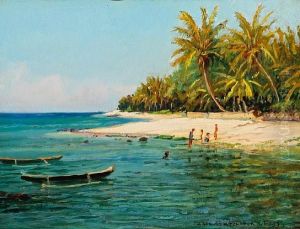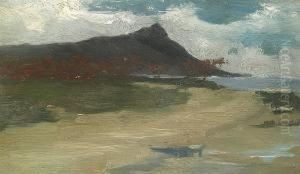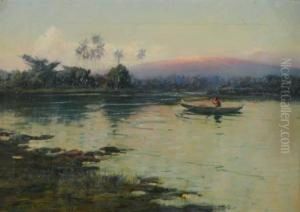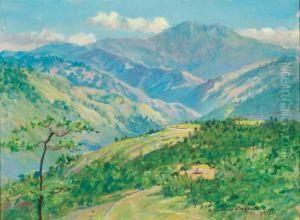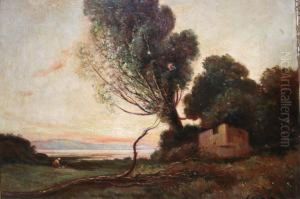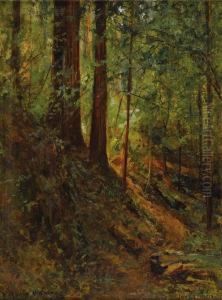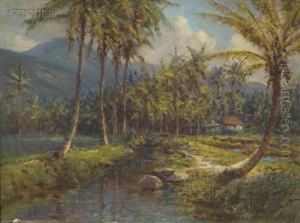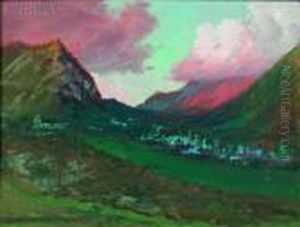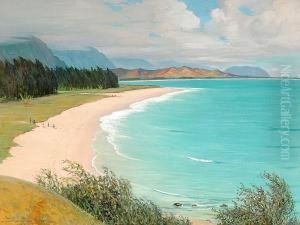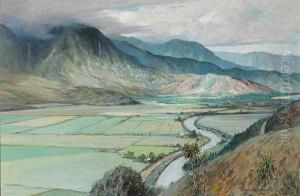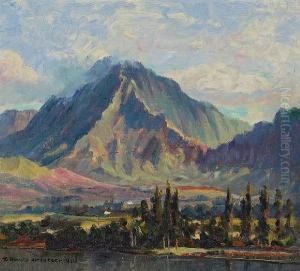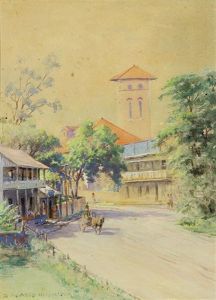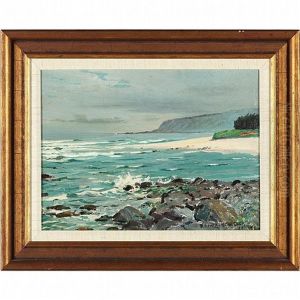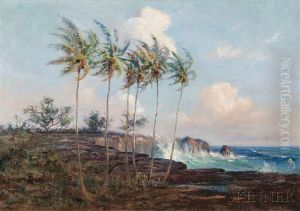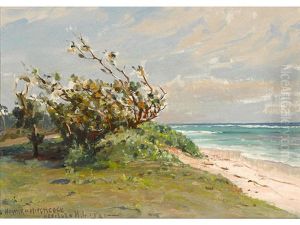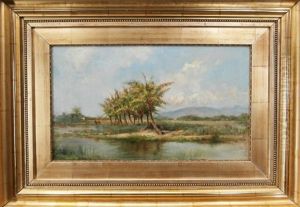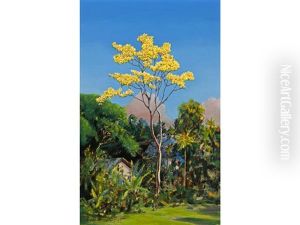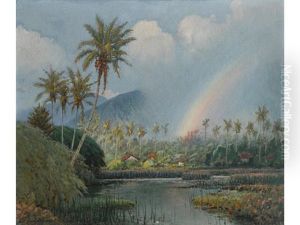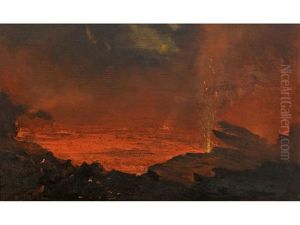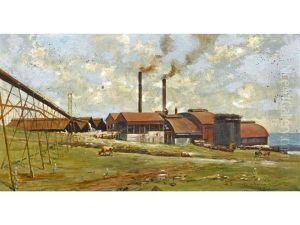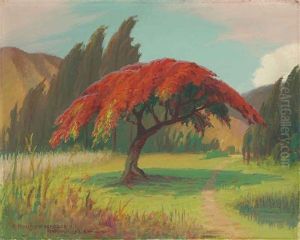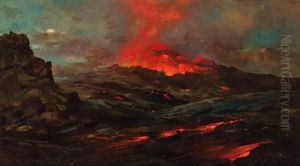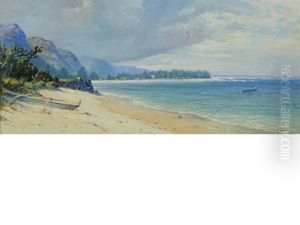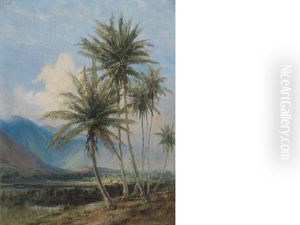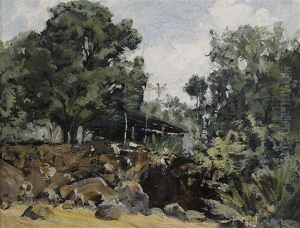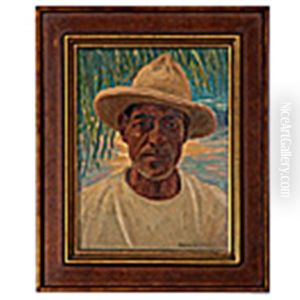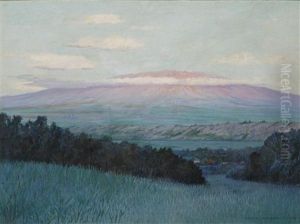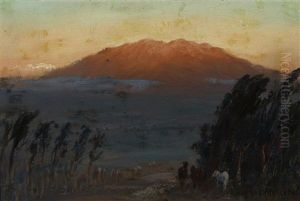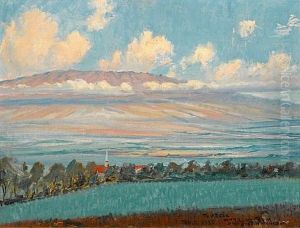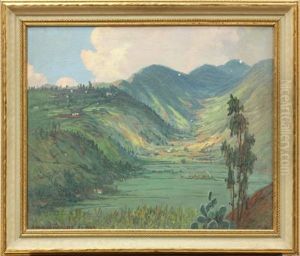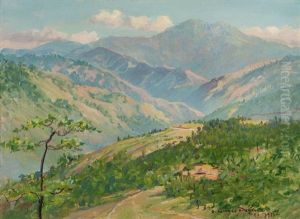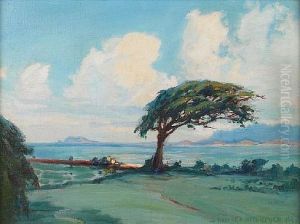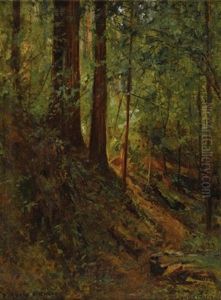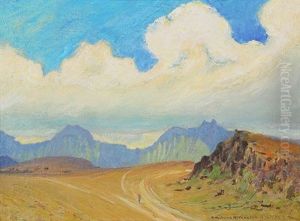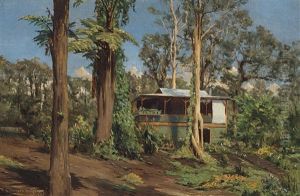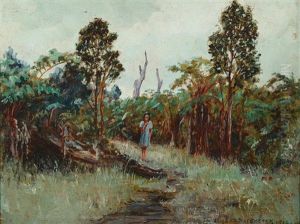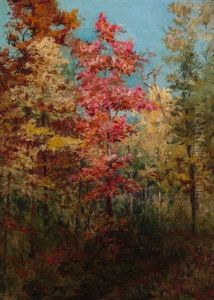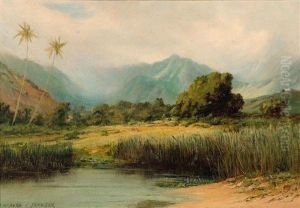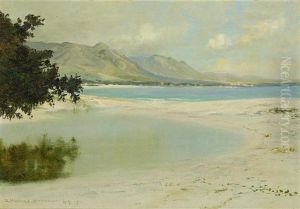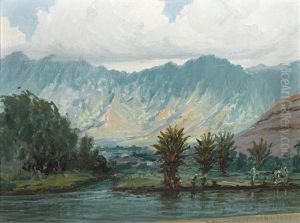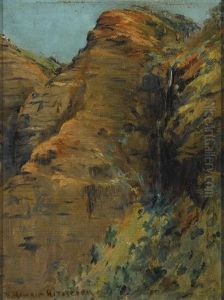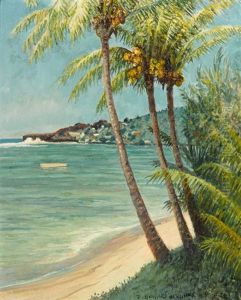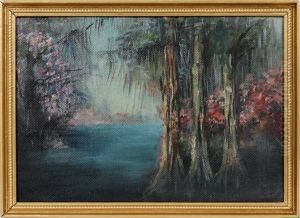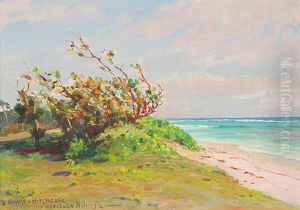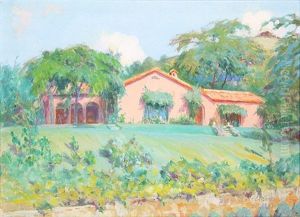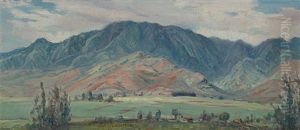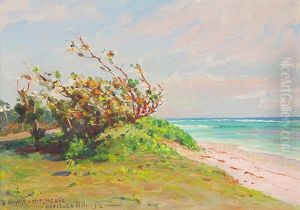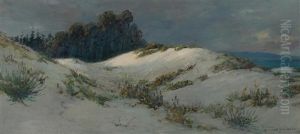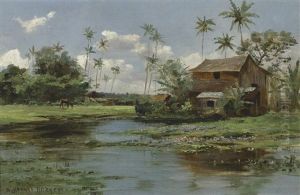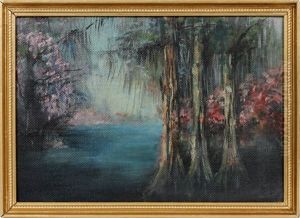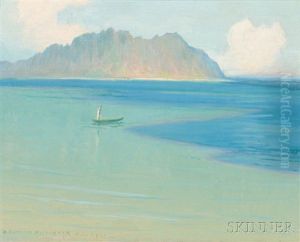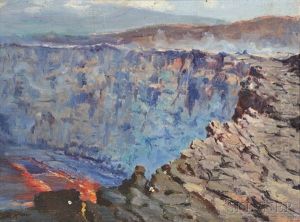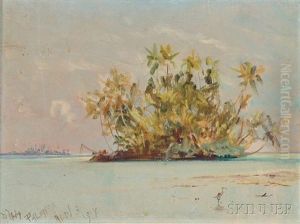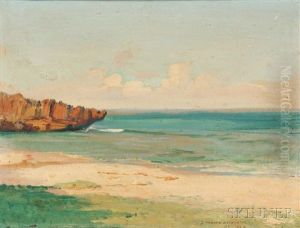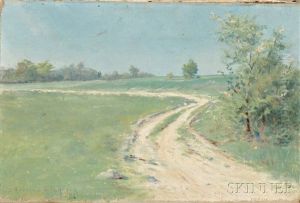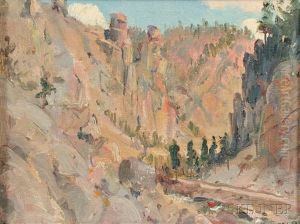David Howard Hitchcock Paintings
David Howard Hitchcock was an American painter born on May 15, 1861, in Hilo, Hawaii. He is best known for his remarkable depictions of Hawaii's landscapes, capturing the unique natural beauty of the islands. His works were instrumental in conveying the visual splendor of Hawaii to a broader audience in the late 19th and early 20th centuries.
Hitchcock was the son of Protestant missionaries and grew up in a multicultural environment that included Hawaiian, Chinese, and European influences. He initially studied at Punahou School in Honolulu and later traveled to the United States for further education. Hitchcock continued his art education at the San Francisco School of Design under Virgil Williams and later in Paris at the Académie Julian, where he was influenced by the French landscape tradition.
After returning to Hawaii, Hitchcock began capturing the landscapes of the volcanic islands, and his work quickly gained popularity. He painted lush rainforests, serene beaches, and towering volcanoes, often infused with a sense of tranquility and majestic scale. He is particularly noted for his series of paintings depicting the volcanoes Mauna Loa and Kilauea, which reveal an intimate understanding and appreciation of Hawaii's volatile natural environment.
In 1899, Hitchcock helped establish the Kilohana Art League in Honolulu, which was pivotal in promoting the fine arts in Hawaii. Throughout his career, Hitchcock remained deeply connected to the islands, and his paintings served to preserve the imagery of a Hawaii that was undergoing rapid change due to Western influences and development.
His art held a romantic view of the Hawaiian landscape, which was aligned with the American Impressionist movement of that time. Hitchcock's paintings often exhibited the vibrant light and color of the islands, employing a palette and technique that captured the transient qualities of light and atmosphere.
David Howard Hitchcock's legacy is that of one of the foremost artists of Hawaii, whose works have been collected by major museums and cherished by both residents and visitors to the islands. He left behind a visual heritage that continues to celebrate and document the natural beauty of Hawaii. Hitchcock passed away on January 1, 1943, in Honolulu, leaving a substantial body of work that remains an important part of Hawaii's cultural history.
